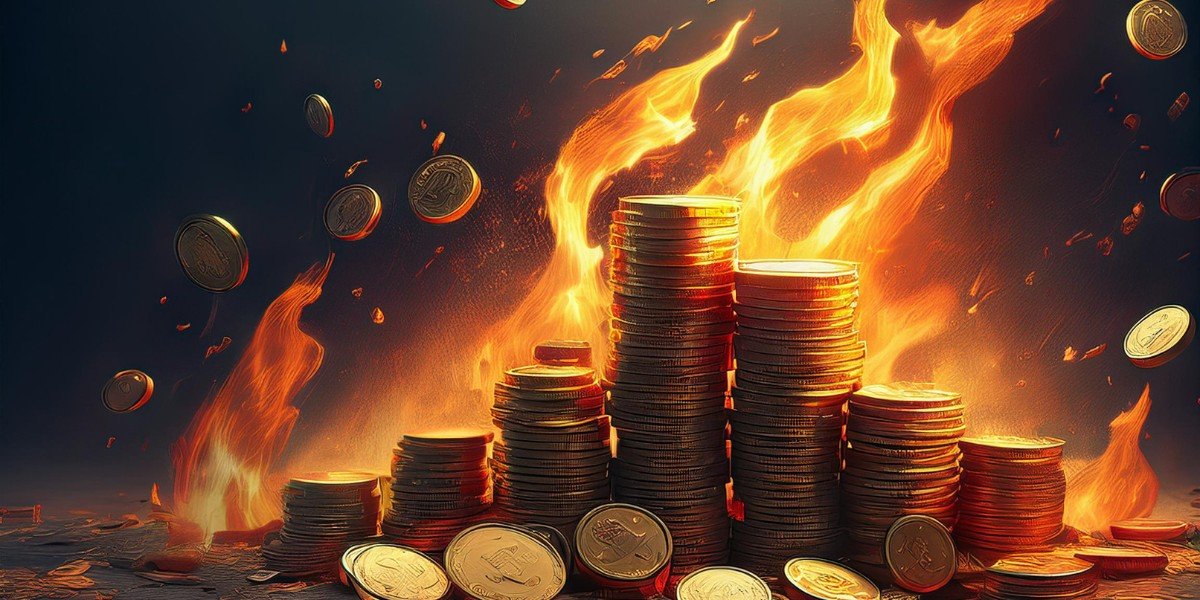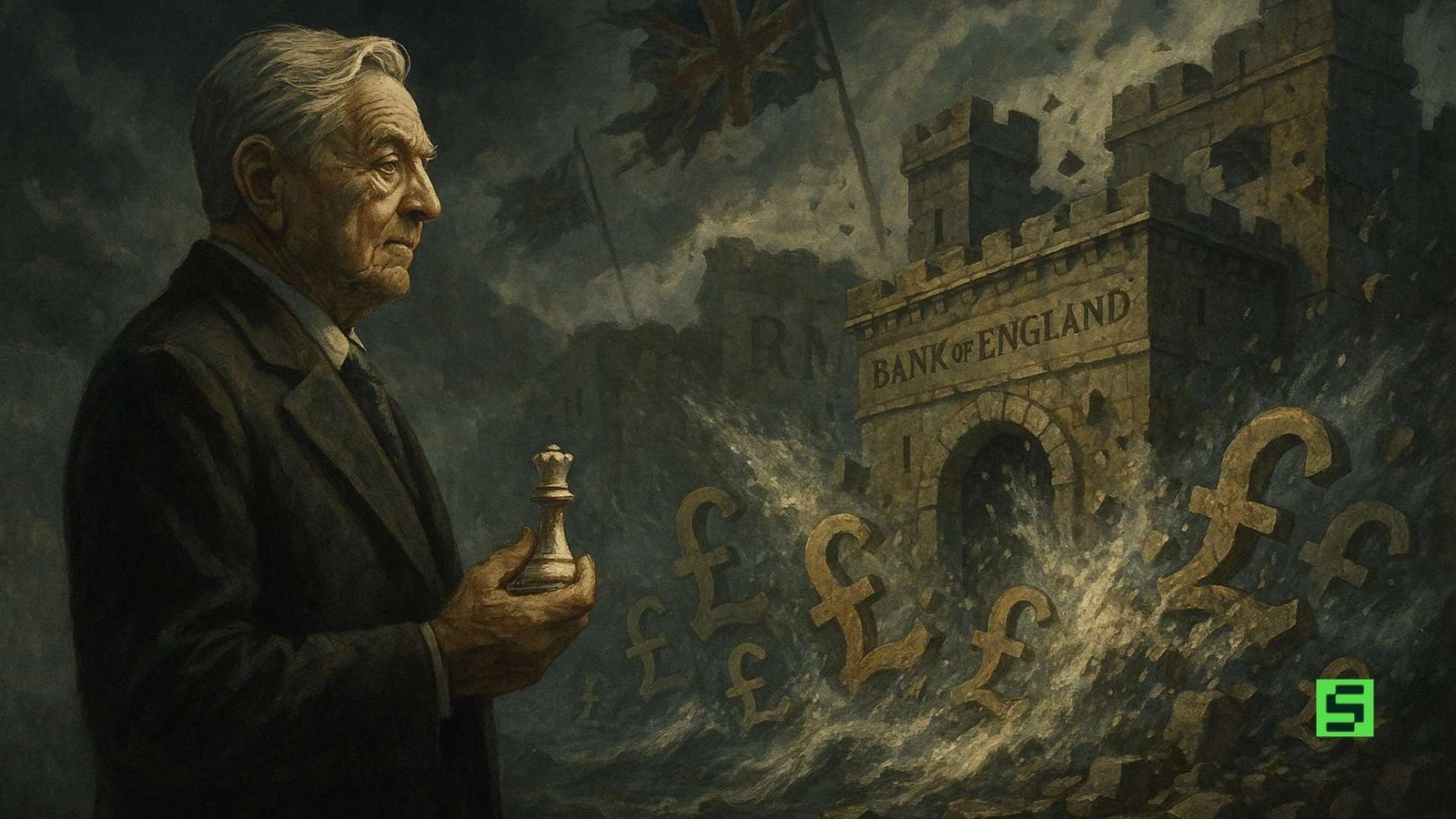Inflation is a word we often hear in the news, but for many, it remains a distant, abstract concept—something that happens “out there” but doesn’t affect them directly. However, inflation quietly creeps into our daily lives, influencing everything from the price of your morning chai to the cost of essential goods.
Inflation has become a pressing issue in India, especially as the country navigates rapid economic growth while trying to manage global economic shocks. Small price increases in basic goods and services can make a big difference for millions of families. But why are prices rising? And how does this all tie into broader economic trends?
In this article, we’ll explore inflation, the different types that impact India, and how it affects ordinary citizens. We’ll also examine how inflation shapes policy decisions, economic planning, and personal finances.
What Is Inflation?
Inflation is the rise in the general price level of goods and services in an economy over time. When inflation occurs, each currency unit buys fewer goods and services, effectively reducing the purchasing power of money.
To make this more relatable, think about how much you could buy with ₹100 a few years ago compared to today. For example, the cost of a basic grocery list—rice, vegetables, and fruits—has been steadily climbing in India. Even if small, the price increase over time adds up and affects your wallet. In this way, inflation isn’t just a statistic; it’s something we feel in our everyday expenses.
While inflation is a natural part of any economy’s cycle, the rate at which it increases can vary and have significant consequences for the broader economy. Moderate inflation, such as 2-3%, is generally considered healthy for an economy, but high inflation can reduce the value of savings, increase the cost of living, and disrupt economic stability.
The Different Types of Inflation in India
Inflation is not just one phenomenon; it can take several forms depending on its underlying causes. Understanding the different types of inflation helps us see how it impacts various sectors of the economy and why its effects are felt differently by consumers, businesses, and policymakers. In India, four key types of inflation are most prominent: demand-pull inflation, cost-push inflation, structural inflation, and imported inflation.
Each type of inflation has its causes and consequences, which uniquely affect the economy. Let’s break down each one:
1. Demand-Pull Inflation: When Demand Outpaces Supply
Demand-pull inflation occurs when the demand for goods and services exceeds the economy’s ability to supply them. When people want to buy more than what is available, prices go up. This type of inflation often occurs in a growing economy where disposable incomes are rising and consumer confidence is high.
Example: During the festive seasons in India, particularly around Diwali, consumer demand for products like electronics, clothing, and even food items surges. When businesses cannot meet the sudden demand, they raise prices to balance supply with demand.
Key Causes
- Strong economic growth: Higher wages and greater employment levels increase consumer spending.
- Festive and seasonal demand: Certain times of the year, like festivals or weddings, drive up consumption.
- Government expenditure: When the government increases spending on infrastructure or public services, it can spike demand for goods and services.
Impact
- Rising consumer prices: Everyday goods and services become more expensive.
- Pressure on purchasing power: As prices rise, consumers may struggle to afford the same goods and services, especially if their income doesn’t increase at the same rate.
2. Cost-Push Inflation: When Production Costs Rise
Cost-push inflation happens when the cost of production increases, forcing businesses to pass these higher costs onto consumers in the form of higher prices. This is often the result of rising costs in essential inputs like raw materials, wages, or energy.
Example: In India, one of the primary drivers of cost-push inflation is the price of crude oil. When global oil prices rise, transportation costs increase. This raises the cost of goods that need to be transported across the country—from food items to manufactured goods.
Key Causes
- Increase in raw material prices: Higher costs for materials like oil, steel, and labor.
- Labor cost increases: Wage hikes, especially in sectors like manufacturing, can lead to higher production costs.
- Supply chain disruptions: Delays or inefficiencies in the supply chain, such as transportation issues or logistical problems, can drive up costs.
Impact
- Higher cost of living: Essential items, such as food and fuel, become more expensive, directly affecting household budgets.
- Lower business profits: Businesses may face reduced profit margins if they cannot pass on higher costs to consumers or if demand falls.
3. Structural Inflation: The Long-Term, Systemic Problem
Fundamental imbalances or inefficiencies in the economy cause structural inflation. This type of inflation tends to occur when certain sectors of the economy face long-term issues that increase prices over time, such as lack of competition, poor infrastructure, or high production inefficiencies.
Example: Despite being an agricultural powerhouse, India suffers from food inflation due to inefficiencies in its agricultural sector. Poor storage facilities, inadequate transportation networks, and bottlenecks in the distribution system often result in significant food waste and rising prices, particularly in rural areas.
Key Causes
- Supply chain inefficiency: Weak infrastructure or poor logistics can lead to higher costs.
- Monopolies and market control: In some sectors, a lack of competition can lead to price manipulation and higher consumer costs.
- Regional economic imbalances: Areas with poor market access often face higher prices.
Impact
- Persistent price hikes: Structural inflation is long-term and often steadily impacts the cost of living.
- Worsening income inequality: Lower-income households, which spend a higher proportion of their income on essentials, are hit hardest by structural inflation.
- Regional disparity: Rural areas tend to face more severe inflationary pressures, especially in states with underdeveloped infrastructure.
4. Imported Inflation: The Global Ripple Effect
Imported inflation occurs when the cost of goods imported from other countries increases, which leads to rising prices domestically. This is particularly important for India, as it imports significant energy and raw materials. The rise in global prices, especially for commodities like oil and gold, can directly impact inflation within the country.
Example: A notable example of imported inflation in India occurred in 2022 when the price of crude oil skyrocketed due to geopolitical tensions in Eastern Europe. This led to an increase in domestic fuel prices, which increased the cost of transportation, food, and goods across the country.
Key Causes
- Increase in global commodity prices: Higher prices for essential imports, especially oil and metals, lead to domestic inflation.
- Exchange rate fluctuations: A weaker Indian Rupee makes imported goods more expensive.
- Global economic disruptions: Events like supply chain breakdowns, geopolitical conflicts, or natural disasters that affect the global supply of goods.
Impact
- Rising transportation costs: An increase in oil prices leads to higher transportation costs, which causes a ripple effect throughout the economy.
- Higher import bills: When the cost of imports increases, it pressures the country’s trade balance, potentially weakening the currency further.
- Increased living costs: Imported goods, particularly fuel and food, become more expensive for consumers, especially in urban areas.
How Does Inflation Affect You?
Inflation is not just a number that economists track or a concept discussed in financial reports—it has real, everyday consequences for ordinary citizens. Whether you’re a student on a budget, a family saving for a big purchase, or a retiree living on a fixed income, inflation impacts your financial decisions and quality of life.
In India, the effects of inflation are particularly pronounced due to the large number of people living in the informal sector, where wages may not keep pace with rising prices. Let’s explore how inflation impacts individuals in various aspects of their lives.
1. Rising Prices of Essential Goods and Services
The most direct way inflation impacts people is through higher prices of goods and services. This includes everything from groceries to housing, transportation, and healthcare. Food inflation is a common concern in India, as staples like vegetables, pulses, and oil often experience significant price hikes.
Example: If the price of vegetables rises by 10%, a family’s monthly grocery bill could increase significantly, even if they purchase the same items. For those already living on tight budgets, this can lead to difficult trade-offs—perhaps spending less on healthcare or skipping a family outing to manage expenses.
Impact
- Families may need to reallocate their spending, cutting back on discretionary items (like entertainment or dining out) to accommodate higher essential costs.
- Rising food prices can mean skipping meals or reducing food quality for low-income families, contributing to poor nutrition.
2. Decreased Purchasing Power
Inflation erodes the value of money over time. This means that the money you have today will buy fewer goods tomorrow. A ₹100 note may seem like a lot now, but if inflation is high, that same ₹100 might only buy ₹90 worth of goods in the future.
This can be particularly challenging for people with fixed incomes, such as retirees or low-wage workers. If wages don’t increase at the same pace as inflation, their real income declines, meaning they can afford less than before.
Example: Let’s say you’ve saved ₹1,00,000 for a big purchase like a new car or home appliance. If inflation averages 6% per year, in one year, the cost of that car could rise to ₹1,06,000. If your income hasn’t increased, you’re effectively losing out on the purchasing power of your savings.
Impact
- Your savings will lose their purchasing power over time, making it harder to achieve long-term financial goals.
- In some cases, workers demand higher wages to keep up with rising prices, which can then lead to further price increases, creating a cycle.
3. Impact on Investments and Savings
Inflation has a direct effect on the value of savings and investments. For individuals relying on traditional savings accounts with low interest rates, the real value of their money may decrease over time. For example, if your savings account earns a 3% annual interest rate, but inflation is 6%, the real return on your savings is negative.
Example: Many Indians invest in fixed deposits (FDs) or savings accounts, where interest rates often lag behind inflation. The money loses value if inflation is 6%, but the FD interest is only 4%.
On the other hand, investments in stocks, real estate, and gold may provide a hedge against inflation, as these assets appreciate over time, particularly during periods of high inflation.
Impact
- Fixed-income earners and retirees may need help to keep their savings from losing value.
- Inflation may push people toward more volatile investments like stocks or real estate in search of returns that outpace inflation.
4. Housing and Rent
Inflation also has a significant impact on the real estate market. Property prices tend to rise over time, especially during periods of inflation. This makes it harder for first-time homebuyers to afford a house. Similarly, inflation increases the cost of construction, which results in higher prices for new properties.
For renters, inflation often leads to higher rental prices as landlords adjust rents in line with rising costs. In cities like Mumbai, Delhi, and Bangalore, rent increases can make up many of a household’s monthly expenses.
Example: In a city like Mumbai, where real estate prices are already high, inflation-driven increases in property prices and rent can make it nearly impossible for middle-class families to own a home.
Impact
- Renters may face significant increases in their housing costs, forcing them to adjust other areas of spending.
- Young professionals or families looking to buy their first home may be priced out of the market, contributing to a growing wealth gap.
5. Increased Uncertainty and Planning Challenges
High inflation can create an environment of economic uncertainty. When prices rise quickly, it becomes harder for individuals to plan for the future, as it’s difficult to predict the real cost of goods or services. This makes budgeting and saving more challenging.
Example: A young professional planning to take a loan for a car or house may need help calculating the loan’s total cost over time, as inflation could lead to higher interest rates or increased monthly repayments.
Impact
- People may focus more on managing their immediate costs than long-term goals, which can delay major life decisions like buying a home or saving for retirement.
- Economic uncertainty can lead to less investment and spending on long-term growth initiatives, harming overall economic development.
6. Social and Economic Inequality
Inflation tends to hit lower-income groups harder than wealthier ones. For people in the informal sector or those with limited access to financial instruments like inflation-protected investments, inflation can erode their standard of living.
Example: The rising cost of food, especially in rural areas, hits low-income families the hardest, as they spend a larger portion of their income on essentials. Conversely, wealthier individuals who can invest in assets that appreciate inflation (such as stocks, bonds, or real estate) can often protect their wealth during inflationary periods.
Impact
- Inflation exacerbates the wealth gap between the rich and the poor, as those with fewer resources cannot protect themselves from rising costs.
- Prolonged inflationary periods can lead to dissatisfaction and unrest, particularly if inflation is perceived as caused by government or corporate mismanagement.
How You Can Fight Inflation?
Inflation is hitting hard, and I understand that you’re feeling the squeeze. Prices are rising everywhere—at the grocery store, on your utility bills, and even at the gas pump. It’s frustrating, and the sense of financial pressure can feel overwhelming. But there are concrete steps you can take right now to protect your finances and shield yourself from inflation’s worst effects. These aren’t just general suggestions—they’re practical actions you can start today. Let’s break this down step by step.
1. Start with a Budget: Know Where Your Money’s Going
You’ve probably heard it before, but now is the time to get serious about tracking every dollar you spend. I know it sounds tedious, but trust me, it’s the most effective way to understand where your money is going—and where you can make cuts. When inflation drives up prices, it’s easy to forget how much you’re spending, especially on things like groceries or dining out.
Start by tracking your monthly expenses for a week or two. Download an app or even keep a handwritten log of everything. You’ll quickly see patterns and, more importantly, find areas where you can cut back. Maybe it’s a subscription you don’t use, a daily coffee run that’s adding up, or entertainment expenses that can be reduced. The goal is to reduce discretionary spending so you can focus more on necessities.
For example, I bet you’re spending a fair bit on groceries—have you noticed that the prices of basic food items have shot up? Consider meal prepping in bulk, shopping smarter (switching to store brands, buying in-season produce), or even cooking at home more. These simple tweaks can make a big difference.
2. Build Your Emergency Fund—Now
If you don’t already have one, now is the time to build an emergency fund. I get it—it’s easy to put this off when life gets busy or expenses pile up. But if inflation is making things harder right now, imagine how much worse it would be if you were hit with an unexpected expense—like a medical bill or a car repair. Without an emergency fund, you could easily find yourself going into debt.
Set a realistic goal for your fund. Don’t worry about saving three to six months of expenses simultaneously. Start small—maybe aim for one month’s living expenses for now. Then, automate your savings. Set up a monthly transfer to a separate savings account. The goal is consistency, even if it’s just ₹500 or ₹5000 a month. Eventually, you’ll have enough to handle those surprises without derailing your finances.
3. Invest in Assets That Beat Inflation
I know you’re probably thinking, “But I don’t have much to invest, and how can I even think about that with inflation running wild?” The truth is that inflation itself creates opportunities to grow your money if you’re strategic. So, if you have savings or some disposable income, investing in inflation-resistant assets is one of the smartest moves you can make.
Consider real estate—not just because property values tend to rise with inflation but also because rent increases. Even if you’re not ready to buy a property, look into REITs (Real Estate Investment Trusts), which allow you to invest in real estate without owning physical property.
Another option is stocks. I know the stock market can be intimidating, but the reality is that stocks in certain sectors (like energy, consumer goods, and healthcare) tend to outperform during inflationary periods. For example, companies that produce everyday products like food or toiletries can pass price increases onto customers. You don’t need to pick individual stocks—there are ETFs (exchange-traded funds) that track these sectors.
If you’re more risk-averse, gold or other precious metals are a safe bet. Historically, gold tends to do well when inflation rises because it’s viewed as a store of value.
4. Diversify Your Income—Don’t Rely on Just One Source
With inflation pushing the cost of living, relying on your salary or one job isn’t enough anymore. It would be best if you diversified your income streams. Whether it’s taking on a side hustle or starting something small on the side, multiple income sources will reduce your vulnerability.
Think about what you’re good at or what you enjoy. Can you freelance or consult in your field? Have you ever considered starting an online business, like selling products on Etsy, creating content on YouTube, or teaching a skill you have on platforms like Udemy or Skillshare?
If you have some savings, consider generating passive income streams, such as rental income or dividend-paying stocks. While passive income takes time to build, once set up, it can provide an additional cushion for you—helping you combat inflation and earn more while you sleep.
5. Get Serious About Debt—Pay Down High-Interest Loans
Inflation doesn’t just raise prices—it also drives up interest rates, which makes debt more expensive. If you have high-interest debt, like credit card balances, now is the time to focus on paying it off. The longer you wait, the more you’ll pay in the long run as interest compounds.
Start by paying off high-interest debts first. Credit card interest rates are often 18% or more, and that can quickly outpace any investment gains. If you have multiple debts, consider using the debt avalanche method, where you pay off the debt with the highest interest rate first while making minimum payments on the others.
Also, take a moment to refinance any loans with variable rates. If you have a mortgage, car loan, or student loan with an adjustable rate, look into refinancing them to lock in a fixed rate before interest rates increase. Refinancing might come with some fees, but in the long run, it can save you much more than it costs.
6. Stay Informed—Increase Your Financial Knowledge
Inflation is complex, but the more you understand how it works, the better equipped you’ll be to make smart choices. You don’t need to be a financial expert, but getting a better grasp on the basics of personal finance and inflation can help you make more informed decisions.
Start reading articles, blogs, or books about personal finance. Listen to podcasts or YouTube videos explaining how inflation works, how to invest wisely, and how to budget better. There are also free online courses you can take. Websites like Coursera or Udemy offer great resources for building financial literacy. Consider even chatting with a financial advisor if you need personalized advice on investing or managing your wealth during inflation.
The more you know, the more empowered you’ll feel to make decisions that benefit you long-term. And as inflation continues to rise, knowledge is one of the best tools to protect your finances.
7. Adapt and Be Flexible—Inflation Is a Moving Target
Finally, one of the most important things to remember is that inflation isn’t static—it’s constantly changing. Adaptability is your best ally in this battle. Keep checking in with your budget, stay on top of market trends, and be willing to make changes when needed.
For example, you might need to adjust your lifestyle during high inflation. This could mean cutting back on vacations or limiting discretionary spending. You might also need to downsize in certain areas, like housing or transportation if your expenses become unsustainable.
The key is to stay flexible—be open to adjusting your spending habits, rethinking financial goals, and staying on top of opportunities to protect and grow your wealth.
Frequently Asked Questions (FAQ)
1. What is inflation?
Inflation is the rise in the general price level of goods and services in an economy over time, reducing money’s purchasing power. For example, what you could buy with ₹100 a few years ago would cost more today.
2. How does inflation affect my daily expenses?
Inflation impacts your daily life through increased prices of essential goods and services, including groceries, housing, transportation, and healthcare. Your purchasing power decreases as prices rise.
3. How can I protect my money from inflation?
Several strategies can help protect against inflation:
- Invest in inflation-resistant assets like stocks, real estate, or gold
- Diversify your income sources
- Build an emergency fund
- Pay down high-interest debt
- Regularly review and adjust your budget
4. Is all inflation bad for the economy?
Moderate inflation (2-3%) is generally considered healthy for an economy. However, high or unpredictable inflation can disrupt economic stability and planning.
5. What can I do to manage my expenses during high inflation?
You can manage expenses by:
- Tracking and budgeting your spending
- Cutting back on non-essential purchases
- Looking for ways to reduce essential costs
- Negotiating better rates for services
- Building multiple income streams




